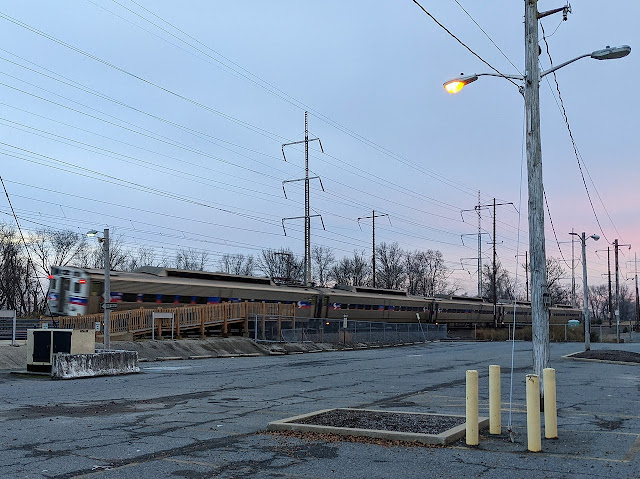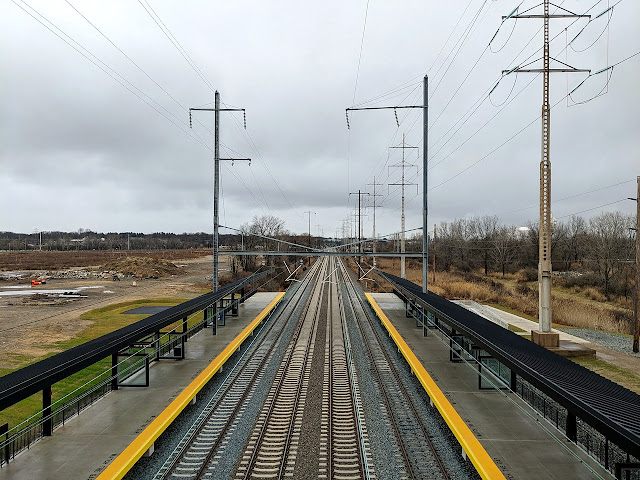The old new Claymont station existed on a curve about a quarter mile to the south of its replacement Built before the ADA took full effect, the old new station was able to get away with low level platforms and a traditional stairway underpass.
One strange feature of the DART First State SEPTA stations at Claymont and Churchman's Crossing was the presence of full time on-site security that would quick on their feet to shoo away any railfans that turned up. Today, while the old new station is probably a greater target of malfeasance, the security booth sits empty.
My arrival was unfortunately a minute too late to get proper photos of both a northbound Acela and a southbound SEPTA R2 local with Silverliners IV.
Ironically, the walkway over I-495 that connects the actual residents of Claymont to the rail station was closed as part of the project, but I heard that it has since reopened along with a dedicated walking path to the new station.
The new $90 million replacement station was built on the site of Claymont Steel, an operation dating back to 1917 that eventually turned into a scrap steel mini-mill type operation in the 1970's and 80's. Constantly under financial pressure as the steel industry went into decline, the Claymont site found itself being passed between a string of owners between 1983 and 2007 when it wound up as part of the Russian Oligarch owned Evraz group. Ultimately American investors had the last laugh as the plans ceased operations in 2013. The site was purchased in 2016 for transit oriented redevelopment with the new station preceding retail and housing.
Construction for the new station began in 2019 and was completed in 2023 with 8+ car high level platforms and an overhead walkway for accessing the far track. The walkway currently provides excellent views of the NEC, however I expect the windows to fog over time. The traditional DART security guard was present, but I figure they got some retraining as instead of kicking me out he just gave me the stink eye while I took photos.
While on the northbound track #1 platform I got photos of a southbound SEPTA R2 with Silverliners IV #287, #178, #179 and #407, along with a southbound Amtrak Regional with ACS-86 #611.
Here we see a video of a northbound Acela Express trainset with power cars #2028 and #2016 followed by an overhead clip of Roanoke Regional Train 176.























































